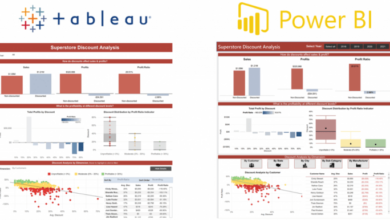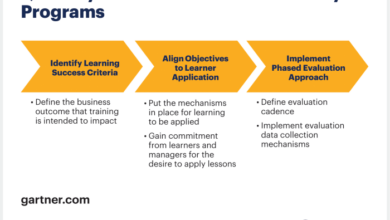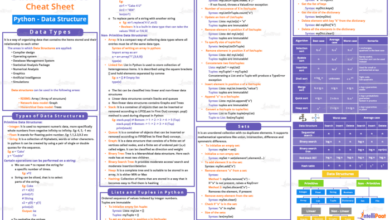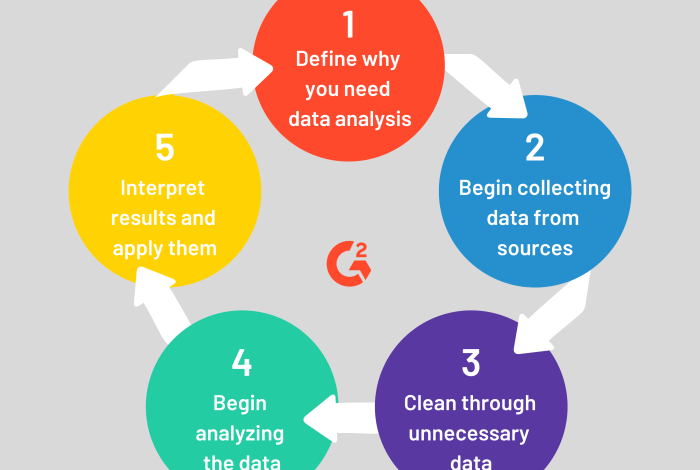
Big Data Analytics Tools: Mastering the Data Explosion
Big data analytics tools are at the forefront of a revolution in how we understand and leverage the vast amounts of information that surround us. The world is awash in data, from social media interactions to financial transactions and scientific experiments.
But this data deluge presents a challenge: how do we make sense of it all and extract valuable insights? That’s where big data analytics tools come in, providing the power to analyze massive datasets, identify patterns, and uncover hidden trends.
These tools are essential for businesses, organizations, and researchers across a wide range of fields. They enable us to make better decisions, improve efficiency, optimize operations, and drive innovation. From predicting customer behavior to detecting fraud, big data analytics tools are transforming industries and changing the way we live and work.
Introduction to Big Data Analytics Tools
The modern world is awash with data. Every click, every purchase, every interaction generates valuable information. Big data analytics tools are essential for extracting insights from this vast sea of data, transforming raw information into actionable knowledge. Big data analytics tools help businesses and organizations make informed decisions, optimize processes, and gain a competitive edge in today’s data-driven world.
Challenges of Managing and Analyzing Massive Datasets
Managing and analyzing massive datasets presents significant challenges. The sheer volume, velocity, and variety of data require specialized tools and techniques to handle efficiently. Here are some key challenges:
- Data Storage:Big data requires vast storage capacity, often exceeding the capabilities of traditional databases. Distributed file systems and cloud storage solutions are essential for storing and managing petabytes or even exabytes of data.
- Data Processing:Traditional data processing methods are inadequate for handling the massive volume and velocity of big data. Parallel processing, distributed computing, and in-memory computing are required to analyze data in real time or near real time.
- Data Complexity:Big data often comes in diverse formats, including structured, semi-structured, and unstructured data. This complexity requires tools that can handle different data types and extract meaningful insights from them.
- Data Quality:Big data sources can be unreliable or contain inconsistencies, requiring data cleaning and quality assurance processes to ensure the accuracy and reliability of analysis.
- Data Security:Protecting sensitive data is paramount, especially when dealing with massive datasets. Strong security measures are essential to prevent unauthorized access, data breaches, and privacy violations.
Real-World Applications of Big Data Analytics Tools
Big data analytics tools are widely used across various industries and applications. Here are some examples:
- E-commerce:Online retailers use big data analytics to personalize recommendations, predict customer behavior, and optimize pricing strategies. For example, Amazon uses big data to personalize product recommendations based on a customer’s browsing history, purchase history, and other data points.
- Healthcare:Hospitals and healthcare providers leverage big data to improve patient outcomes, identify disease outbreaks, and develop personalized treatment plans. For instance, big data can be used to analyze patient records, medical images, and other data to identify patterns and predict the risk of certain diseases.
- Finance:Financial institutions use big data to detect fraudulent transactions, manage risk, and make investment decisions. For example, banks use big data to analyze transaction patterns and identify suspicious activity that may indicate fraud.
- Social Media:Social media platforms use big data to understand user behavior, target advertising, and identify trending topics. For instance, Twitter uses big data to analyze tweets and identify trending hashtags, which can provide insights into public sentiment and current events.
- Transportation:Transportation companies use big data to optimize routes, manage traffic flow, and predict demand. For example, ride-sharing companies like Uber and Lyft use big data to optimize ride pricing, manage driver availability, and predict demand in different areas.
Types of Big Data Analytics Tools
Big data analytics tools are essential for organizations to extract meaningful insights from vast amounts of data. These tools are designed to handle the challenges associated with big data, including its volume, velocity, and variety. The landscape of big data analytics tools is diverse, with various categories and subcategories catering to different needs.
Categorization of Big Data Analytics Tools
Big data analytics tools can be categorized based on their functionalities, which determine their primary applications and strengths. This categorization helps in understanding the different types of tools available and selecting the most appropriate ones for specific tasks.
- Data Warehousing Tools:These tools are designed to store and manage large volumes of data from various sources. They enable organizations to consolidate data into a central repository for analysis and reporting. Examples include:
- Amazon Redshift:A fully managed, petabyte-scale data warehouse service offered by Amazon Web Services (AWS).
It provides high-performance query processing and scalability, making it suitable for complex analytical workloads.
- Google BigQuery:A serverless data warehouse service offered by Google Cloud Platform (GCP). It allows for efficient querying and analysis of large datasets, with built-in machine learning capabilities.
- Snowflake:A cloud-based data warehouse platform that offers a multi-cloud approach. It provides a unified data platform for data storage, querying, and analytics.
- Amazon Redshift:A fully managed, petabyte-scale data warehouse service offered by Amazon Web Services (AWS).
- Data Mining Tools:These tools focus on discovering patterns, relationships, and insights from data using algorithms and statistical techniques. They are used for tasks such as classification, clustering, and anomaly detection. Examples include:
- RapidMiner:A comprehensive data science platform that offers a wide range of data mining algorithms and machine learning techniques.
It provides an intuitive interface for building and deploying predictive models.
- Weka:An open-source machine learning toolkit developed at the University of Waikato. It provides a collection of algorithms for data mining tasks, including classification, regression, and clustering.
- Orange:A visual data mining and machine learning toolkit that offers a user-friendly graphical interface. It provides a range of data analysis and visualization capabilities.
- RapidMiner:A comprehensive data science platform that offers a wide range of data mining algorithms and machine learning techniques.
- Data Visualization Tools:These tools enable users to create interactive and informative visualizations from data. They help in understanding trends, patterns, and insights by presenting data in a visually appealing and easily digestible format. Examples include:
- Tableau:A powerful data visualization and analytics platform that offers a drag-and-drop interface for creating dashboards and reports.
It provides a wide range of visualization options and supports various data sources.
- Power BI:A business intelligence and data visualization tool offered by Microsoft. It provides a comprehensive set of features for data exploration, analysis, and reporting, with strong integration with other Microsoft products.
- Qlik Sense:A self-service business intelligence and data visualization platform that emphasizes user-friendliness and ease of use. It offers a flexible and intuitive interface for creating interactive dashboards and visualizations.
- Tableau:A powerful data visualization and analytics platform that offers a drag-and-drop interface for creating dashboards and reports.
- Data Streaming Tools:These tools are designed to process and analyze data in real-time as it arrives. They are used for applications that require immediate insights and decision-making based on streaming data. Examples include:
- Apache Kafka:A distributed streaming platform that enables real-time data ingestion, processing, and delivery.
It is widely used for building real-time applications, such as event processing and message queuing.
- Apache Flink:An open-source stream processing engine that offers high-performance and fault tolerance. It is used for real-time analytics, data enrichment, and event-driven applications.
- Amazon Kinesis:A managed streaming service offered by AWS. It allows for capturing, processing, and analyzing real-time data streams, with various integration options.
- Apache Kafka:A distributed streaming platform that enables real-time data ingestion, processing, and delivery.
- NoSQL Databases:These databases are designed to handle unstructured and semi-structured data, which is common in big data environments. They provide flexibility and scalability for storing and querying large volumes of data. Examples include:
- MongoDB:A document-oriented database that stores data in JSON-like documents.
It provides flexibility in data modeling and supports various data types.
- Cassandra:A column-oriented database that offers high availability and scalability. It is used for handling large datasets and real-time data workloads.
- Redis:An in-memory data store that provides high performance for caching, session management, and real-time data processing.
- MongoDB:A document-oriented database that stores data in JSON-like documents.
Comparison of Big Data Analytics Tools
| Tool | Strengths | Weaknesses ||—|—|—|| Amazon Redshift | Scalability, performance, integration with AWS services | Cost, complexity || Google BigQuery | Serverless, cost-effective, machine learning capabilities | Limited data manipulation options || Snowflake | Multi-cloud support, unified platform, data sharing | Cost, complexity || RapidMiner | Comprehensive algorithms, intuitive interface, automated model building | Limited scalability for large datasets || Weka | Open-source, wide range of algorithms, extensive documentation | Requires coding experience, limited visualization capabilities || Orange | User-friendly interface, visual data mining, easy to learn | Limited advanced analytics capabilities || Tableau | Powerful visualization capabilities, drag-and-drop interface, wide data source support | Cost, limited data manipulation || Power BI | Comprehensive features, integration with Microsoft products, strong reporting capabilities | Cost, complexity || Qlik Sense | User-friendliness, interactive dashboards, self-service analytics | Limited advanced analytics capabilities || Apache Kafka | High throughput, scalability, real-time data processing | Complexity, requires expertise || Apache Flink | High performance, fault tolerance, real-time analytics | Complexity, requires coding experience || Amazon Kinesis | Managed service, real-time data processing, integration with AWS services | Cost, limited customization || MongoDB | Flexible data modeling, scalability, high performance | Requires expertise, limited query optimization || Cassandra | High availability, scalability, real-time data processing | Requires expertise, complex data modeling || Redis | High performance, in-memory data store, caching capabilities | Limited data storage capacity, volatile data |
Key Features of Big Data Analytics Tools
Big data analytics tools are designed to handle massive datasets efficiently and extract valuable insights. These tools offer a range of features that enable organizations to process, analyze, and visualize data effectively. Understanding the core functionalities of these tools is crucial for selecting the most suitable solution for your specific needs.
Data Ingestion
Data ingestion is the process of collecting and importing data from various sources into a data analytics platform. Effective data ingestion is essential for building a comprehensive and accurate data repository.
- Data Sources:Big data analytics tools can handle data from diverse sources, including databases, files, APIs, social media, and sensor networks. This versatility allows for the integration of data from various departments and systems within an organization.
- Data Formats:These tools support various data formats, including structured data (e.g., CSV, XML), semi-structured data (e.g., JSON), and unstructured data (e.g., text, images). This flexibility enables the analysis of data in its original format, without the need for extensive pre-processing.
- Real-time Ingestion:Some tools offer real-time data ingestion capabilities, allowing for continuous data streaming and analysis. This is particularly beneficial for applications requiring immediate insights from constantly updated data, such as fraud detection or market trend analysis.
- Data Transformation:Data ingestion often involves transforming data into a format suitable for analysis. This might include cleaning, enriching, and standardizing data to ensure consistency and quality.
Data Processing
Data processing involves transforming raw data into meaningful information through various techniques. Big data analytics tools employ a range of processing techniques to handle large datasets efficiently.
- Batch Processing:Batch processing involves processing large datasets in batches, typically at regular intervals. This approach is suitable for tasks that do not require real-time analysis, such as periodic reporting or historical trend analysis.
- Stream Processing:Stream processing enables real-time analysis of continuous data streams. This is crucial for applications where immediate insights are critical, such as fraud detection, anomaly detection, or customer behavior analysis.
- Distributed Processing:Big data analytics tools often employ distributed processing, where data is divided into smaller chunks and processed across multiple nodes in a cluster. This parallel processing approach significantly accelerates data processing, enabling the analysis of massive datasets in a reasonable timeframe.
- Data Aggregation:Data aggregation involves combining data from multiple sources or different time periods to derive higher-level insights. This can involve summarizing data, calculating averages, or performing other aggregations based on specific criteria.
Data Storage
Data storage is a critical aspect of big data analytics, as it involves managing massive datasets efficiently and securely. Big data analytics tools utilize various storage mechanisms to handle the volume, velocity, and variety of data.
- Distributed File Systems:Tools often leverage distributed file systems, such as Hadoop Distributed File System (HDFS), to store and manage data across multiple nodes. This approach ensures scalability and high availability, as data is replicated across the cluster.
- NoSQL Databases:NoSQL databases are designed to handle unstructured and semi-structured data, providing flexibility and scalability for storing diverse data types. Popular NoSQL databases include MongoDB, Cassandra, and HBase.
- Data Warehouses:Data warehouses are designed for storing large volumes of data for analytical purposes. They typically use relational databases, such as Oracle, SQL Server, or PostgreSQL, to provide structured storage and querying capabilities.
- Cloud Storage:Cloud storage services, such as Amazon S3, Google Cloud Storage, and Azure Blob Storage, offer scalable and cost-effective storage solutions for big data. These services allow for storing data in the cloud, providing accessibility and redundancy.
Data Visualization
Data visualization plays a crucial role in understanding and communicating insights from big data. Big data analytics tools provide various visualization capabilities to represent data effectively.
- Interactive Dashboards:Interactive dashboards enable users to explore data dynamically, filter data, and drill down into specific details. They provide a user-friendly interface for visualizing key performance indicators (KPIs) and trends.
- Charts and Graphs:Tools offer a wide range of chart types, including bar charts, line graphs, scatter plots, heatmaps, and pie charts, to visualize data in different ways. This allows for effective communication of insights based on the nature of the data and the desired message.
Big data analytics tools are powerful, but sometimes you need a break from the complex algorithms and data visualizations. That’s when I turn to a creative outlet like crafting a xoxo heart clutch diy project. It’s a reminder that even in the world of data, there’s room for simple joys and personal expression.
And who knows, maybe the next big data breakthrough will come from a creative mind that’s been inspired by a handmade clutch!
- Geographic Mapping:Geographic mapping enables the visualization of data on maps, allowing for spatial analysis and understanding data patterns across different locations. This is particularly useful for applications involving location-based data, such as sales analysis, customer demographics, or traffic patterns.
- Data Storytelling:Effective data visualization goes beyond simply presenting data; it involves creating compelling narratives that engage users and communicate insights effectively. Tools often provide features for creating interactive presentations and reports that combine data visualizations with text.
Comparison of Big Data Analytics Tools
| Tool | Data Processing Speed | Scalability | Security | User Interface |
|---|---|---|---|---|
| Hadoop | High | Excellent | High | Command-line based, complex |
| Spark | Very High | Excellent | High | API-based, more user-friendly |
| Amazon Redshift | High | Excellent | High | SQL-based, intuitive |
| Tableau | Moderate | Good | Moderate | Highly visual, drag-and-drop interface |
Benefits of Using Big Data Analytics Tools
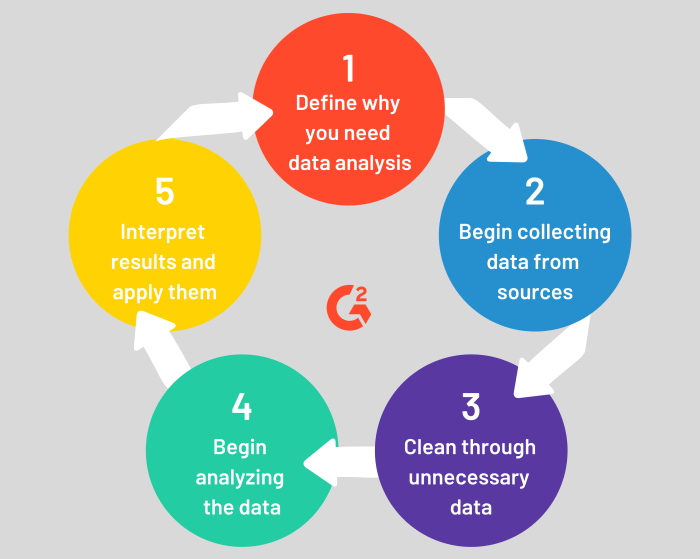
In today’s data-driven world, businesses and organizations are leveraging the power of big data analytics tools to gain valuable insights, make informed decisions, and drive growth. These tools provide a comprehensive suite of capabilities that enable organizations to process, analyze, and interpret massive amounts of data, uncovering hidden patterns, trends, and anomalies that would otherwise remain obscured.
Big data analytics tools are becoming increasingly essential in today’s data-driven world. They empower businesses to extract valuable insights from massive datasets, driving informed decision-making and competitive advantage. However, as Apple executive Craig Federighi recently pointed out in a commentary on AI PCs , there’s a constant need to adapt and innovate to stay ahead of the curve.
This constant evolution in the tech landscape underscores the importance of leveraging the power of big data analytics tools to navigate the complexities of a rapidly changing world.
The benefits of using big data analytics tools are far-reaching, impacting various aspects of an organization’s operations, from improving decision-making to enhancing efficiency and driving innovation.
Improved Decision-Making
Big data analytics tools empower organizations to make more informed and data-driven decisions by providing insights into customer behavior, market trends, and operational performance. By analyzing vast datasets, organizations can identify patterns, predict future outcomes, and understand the underlying factors driving business results.
This data-driven approach allows for more accurate forecasting, resource allocation, and strategic planning, ultimately leading to better business outcomes. For example, a retail company can analyze customer purchase history and website interactions to understand buying patterns and preferences, enabling them to personalize marketing campaigns and offer targeted promotions, leading to increased sales and customer satisfaction.
Enhanced Efficiency
Big data analytics tools can significantly enhance operational efficiency by identifying bottlenecks, optimizing processes, and automating tasks. By analyzing data from various sources, organizations can identify areas for improvement, streamline workflows, and eliminate redundancies. For instance, a manufacturing company can use big data analytics to monitor production lines in real-time, identify potential issues before they escalate, and optimize resource allocation, resulting in increased productivity and reduced downtime.
Optimized Operations
Big data analytics tools provide organizations with the ability to optimize their operations by identifying areas for improvement and implementing data-driven solutions. By analyzing data from various sources, such as customer feedback, sensor readings, and financial records, organizations can gain a comprehensive understanding of their operations, identify areas for improvement, and implement data-driven solutions.
Big data analytics tools are powerful, but they can be overwhelming without a clear roadmap. That’s where mobile project management apps come in handy. Apps like the ones listed in this article can help you organize your big data projects, track progress, and ensure everyone is on the same page.
With a well-structured plan, even the most complex big data analytics projects can be tackled with ease.
For example, a transportation company can use big data analytics to analyze traffic patterns and optimize delivery routes, reducing travel time and fuel consumption, leading to cost savings and improved customer service.
Driven Innovation
Big data analytics tools can drive innovation by uncovering new opportunities, identifying emerging trends, and fostering a culture of data-driven decision-making. By analyzing vast datasets, organizations can identify new market segments, develop innovative products and services, and anticipate customer needs.
For example, a healthcare company can use big data analytics to analyze patient data and identify potential health risks, leading to the development of personalized treatment plans and preventative measures.
Considerations for Choosing Big Data Analytics Tools
Choosing the right big data analytics tool is crucial for organizations to effectively manage and analyze their data. This decision requires careful consideration of various factors to ensure the chosen tool aligns with the organization’s specific needs and objectives.
Data Volume and Complexity
The volume and complexity of data are critical factors in tool selection. Tools designed for handling massive datasets may not be suitable for smaller, less complex data sets. Conversely, tools built for simple data analysis may struggle with the processing demands of large, complex datasets.
- Data Volume:Consider the amount of data your organization generates and stores. If your data volume is expected to grow significantly, you need a tool that can scale accordingly.
- Data Complexity:Evaluate the structure, variety, and relationships within your data. Complex data structures may require tools with advanced features for data manipulation and analysis.
Budget and Resources
Budget and available resources are important considerations. Some tools are open-source and free to use, while others come with significant licensing fees. Organizations need to assess their budget and resource availability to determine the affordability and feasibility of different tools.
- Licensing Costs:Compare the licensing fees of different tools and consider the long-term cost of ownership, including maintenance and support.
- Hardware Requirements:Determine the hardware infrastructure needed to support the chosen tool, including storage, processing power, and network bandwidth. This will influence your overall budget.
- Technical Expertise:Evaluate the technical expertise within your organization. Some tools require specialized skills and knowledge, while others offer user-friendly interfaces that are easier to learn and use.
Use Cases and Requirements, Big data analytics tools
Organizations need to define their specific use cases and requirements before selecting a tool. Different tools excel in specific areas, such as data visualization, predictive modeling, or real-time analysis. Choosing a tool that aligns with your specific needs will maximize its value and effectiveness.
- Data Visualization:If your primary goal is to create insightful visualizations, consider tools with advanced visualization capabilities.
- Predictive Modeling:For tasks involving forecasting and predicting future outcomes, choose a tool with strong machine learning and statistical modeling features.
- Real-Time Analysis:If you need to analyze data in real time, such as for fraud detection or customer churn prediction, select a tool with real-time processing capabilities.
Industry and Organization Size
The industry and size of the organization also influence tool selection. Tools tailored for specific industries, such as healthcare or finance, offer specialized features and functionalities. Similarly, the size of the organization determines the scalability and complexity of the required solution.
- Industry-Specific Tools:Consider tools designed for your specific industry to leverage domain-specific features and best practices.
- Scalability:Choose a tool that can scale with your organization’s growth, handling increasing data volumes and user demands.
Future Trends in Big Data Analytics Tools
The field of big data analytics is constantly evolving, driven by advancements in technology, growing data volumes, and changing business needs. New tools and techniques are emerging to address these challenges and unlock the potential of big data. This section explores the key trends shaping the future of big data analytics tools and their impact on businesses.
The Rise of Cloud-Based Big Data Analytics
Cloud computing has revolutionized the way businesses manage and analyze data. Cloud-based big data analytics tools offer several advantages, including scalability, affordability, and ease of use. These tools are accessible through web interfaces, eliminating the need for on-premises infrastructure and complex setup processes.
- Scalability:Cloud platforms can easily scale to accommodate growing data volumes and processing needs, ensuring that businesses can handle increasing data demands without investing in expensive hardware.
- Affordability:Cloud-based tools often offer pay-as-you-go pricing models, making them more cost-effective than traditional on-premises solutions. Businesses only pay for the resources they use, reducing upfront investments and ongoing maintenance costs.
- Ease of Use:Cloud-based tools provide user-friendly interfaces and pre-configured environments, simplifying the deployment and management of big data analytics solutions. This allows businesses to quickly get started with big data analytics without requiring extensive technical expertise.
Examples of popular cloud-based big data analytics platforms include Amazon Web Services (AWS), Microsoft Azure, and Google Cloud Platform (GCP). These platforms offer a wide range of services and tools, such as data storage, processing, analysis, and visualization, enabling businesses to build comprehensive big data analytics solutions in the cloud.
The Integration of Artificial Intelligence (AI) and Machine Learning (ML)
AI and ML are transforming big data analytics by automating complex tasks, improving accuracy, and uncovering hidden insights. Big data analytics tools are increasingly incorporating AI and ML algorithms to enhance their capabilities.
- Automated Feature Engineering:AI-powered tools can automatically identify and extract relevant features from raw data, simplifying the data preparation process and improving the accuracy of analytical models.
- Predictive Analytics:AI and ML algorithms can be used to build predictive models that forecast future trends and outcomes based on historical data. This allows businesses to make more informed decisions and optimize their operations.
- Anomaly Detection:AI and ML algorithms can identify unusual patterns and outliers in data, helping businesses detect fraudulent activities, system failures, or other anomalies that might go unnoticed.
For example, AI-powered fraud detection systems can analyze massive datasets of transactions to identify suspicious patterns and prevent fraudulent activities. This can significantly reduce financial losses and improve customer trust.
The Importance of Data Governance and Security
As data volumes continue to grow, ensuring data governance and security becomes paramount. Big data analytics tools are evolving to address these concerns by incorporating robust security features and data governance mechanisms.
- Data Encryption:Data encryption is essential for protecting sensitive information from unauthorized access. Big data analytics tools are increasingly implementing advanced encryption techniques to safeguard data at rest and in transit.
- Access Control:Access control mechanisms ensure that only authorized users can access and manipulate data. Big data analytics tools are incorporating role-based access control (RBAC) and other security measures to restrict access to sensitive information.
- Data Auditing and Compliance:Data auditing tools help businesses track data usage, identify potential security breaches, and ensure compliance with industry regulations. Big data analytics tools are integrating data auditing capabilities to enhance data governance and security.
Data governance and security are critical for maintaining data integrity, protecting privacy, and complying with regulations. As big data analytics tools become more sophisticated, it is essential to prioritize these aspects to ensure responsible and ethical data management.
The Rise of Real-Time Analytics
Traditional big data analytics often involved batch processing, where data was analyzed in large batches at regular intervals. However, the increasing demand for real-time insights has led to the emergence of real-time analytics tools. These tools enable businesses to analyze data as it is generated, providing immediate insights and enabling faster decision-making.
- Streaming Data Processing:Real-time analytics tools can process streaming data from various sources, such as social media feeds, sensor networks, and financial markets, providing continuous updates and insights.
- Event-Driven Analytics:These tools can trigger actions based on real-time events, such as customer interactions, website traffic patterns, or sensor readings, enabling businesses to respond quickly to changing conditions.
- Real-Time Visualization:Real-time analytics tools provide interactive dashboards and visualizations that display live data updates, allowing businesses to monitor key metrics and trends in real time.
Real-time analytics is essential for businesses operating in dynamic environments, where timely insights can make a significant difference in customer engagement, operational efficiency, and competitive advantage.
The Growing Importance of Data Visualization
Data visualization is crucial for making big data insights accessible and understandable. Big data analytics tools are increasingly incorporating advanced visualization capabilities to present complex data in an intuitive and engaging way.
- Interactive Dashboards:Interactive dashboards allow users to explore data, filter results, and drill down into specific insights. This enables businesses to gain a deeper understanding of their data and make data-driven decisions.
- Data Storytelling:Visualization tools can help businesses create compelling data stories that communicate complex insights to stakeholders. This helps to ensure that data analysis results are easily understood and actionable.
- Advanced Visualization Techniques:Big data analytics tools are leveraging advanced visualization techniques, such as geographic information systems (GIS), network graphs, and heatmaps, to present data in a more informative and engaging way.
Data visualization plays a critical role in bridging the gap between data analysis and decision-making. By presenting data in a clear and concise way, businesses can make data-driven decisions with confidence.


